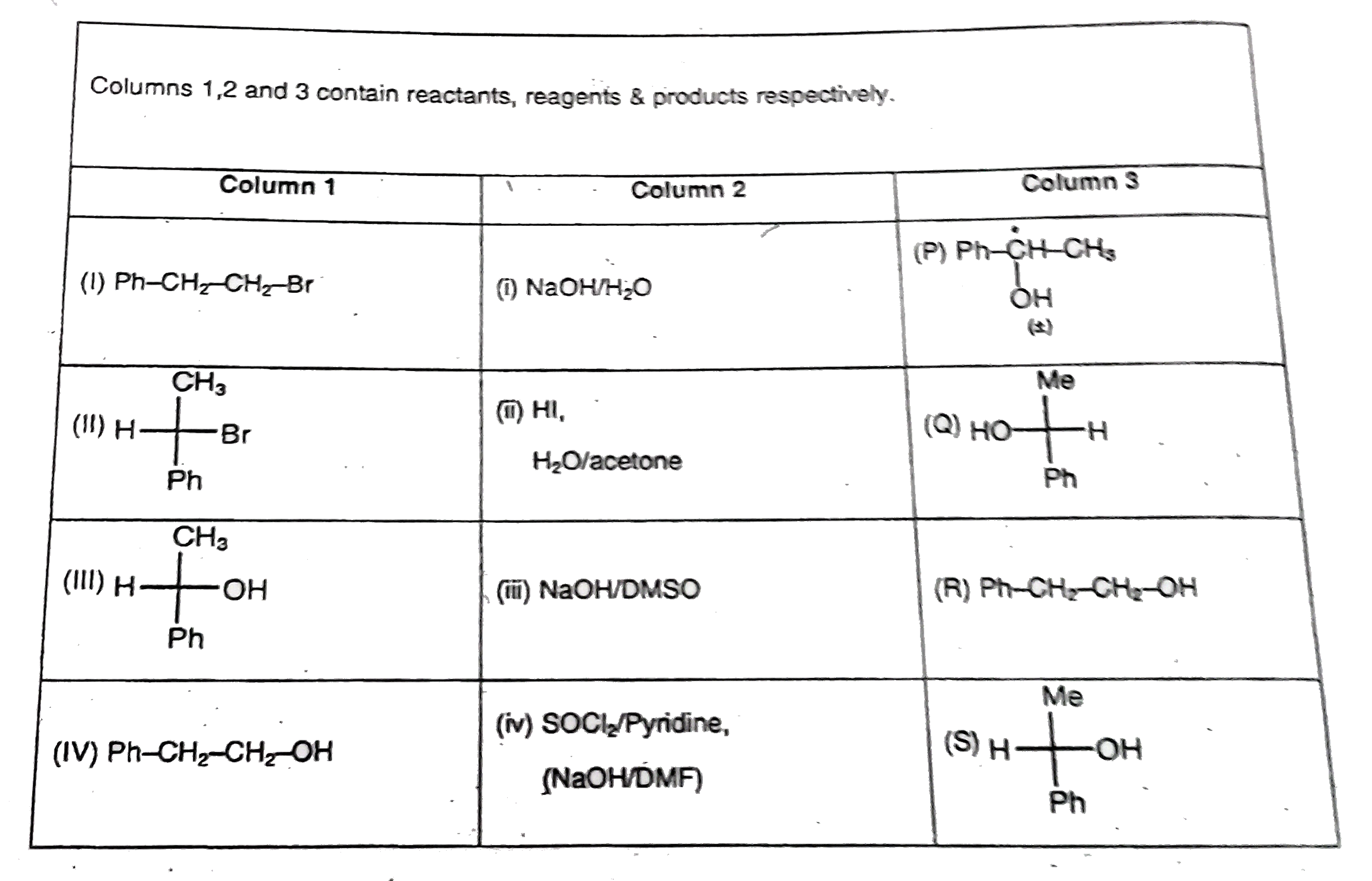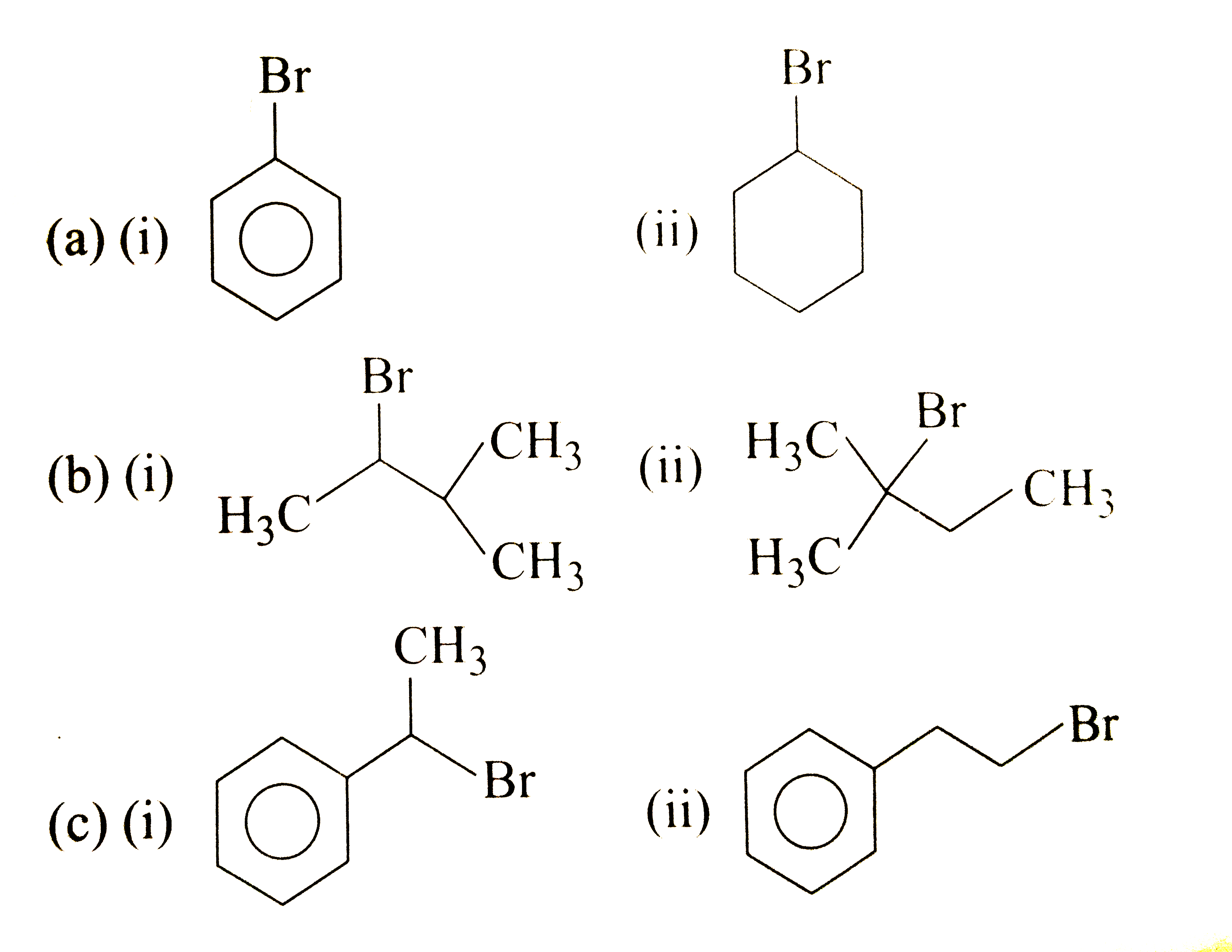The hydrolysis of 2-bromo-3-methylbutane by SN1 mechanism gives meinly:
3-methyl-2-butanol
2-methyl-2-butanol
2,2-dimethyl-2-propanol
2-methyl-1-butanol
The correct Answer is:B
Step by step video, text & image solution for The hydrolysis of 2-bromo-3-methylbutane by S_(N^(1)) mechanism gives meinly: by Chemistry experts to help you in doubts & scoring excellent marks in Class 12 exams.
Updated on:21/07/2023Topper's Solved these Questions
- BASIC PRINCIPLES OF ORGANIC COMPOUNDS (MECHANISM OF ORGANIC REACTIONS)BOOK - OP TANDONCHAPTER - BASIC PRINCIPLES OF ORGANIC COMPOUNDS (MECHANISM OF ORGANIC REACTIONS)EXERCISE - OBJECTIVE QUESTIONS (Level-B)
25 Videos
- BASIC PRINCIPLES OF ORGANIC COMPOUNDS (MECHANISM OF ORGANIC REACTIONS)BOOK - OP TANDONCHAPTER - BASIC PRINCIPLES OF ORGANIC COMPOUNDS (MECHANISM OF ORGANIC REACTIONS)EXERCISE - SET II
24 Videos
- BASIC PRINCIPLES OF ORGANIC COMPOUNDS (MECHANISM OF ORGANIC REACTIONS)BOOK - OP TANDONCHAPTER - BASIC PRINCIPLES OF ORGANIC COMPOUNDS (MECHANISM OF ORGANIC REACTIONS)EXERCISE - BRAIN STORMING PROBLEMS
14 Videos
- BASIC PRINCIPLESBOOK - OP TANDONCHAPTER - BASIC PRINCIPLESEXERCISE - SECTION V INTEGER ANSWER TYPE QUESTION
3 Videos
- CARBOXYLIC ACIDS AND THEIR DERIVATIVESBOOK - OP TANDONCHAPTER - CARBOXYLIC ACIDS AND THEIR DERIVATIVESEXERCISE - Integer
4 Videos
Similar Questions
Knowledge Check

SN2 mechanism is observed in :A(I)(iii)(R)B(IV)(iv)(R)C(II)(iii)(Q)DallThe compound that does not undergo hydrolysis by SN1 mechanism is :
AH2C=CHCH2ClBC6H5ClCC6H5CH2ClDC6H5CH(C6H5)ClThe compound which does not undergo hydrolysis by SN1 mechanism is:
ACH2=CHCH2ClBC6H5ClCC6H5CH2ClDC6H5CH(CH3)Cl
Hydrolysis of 2-bromo-3-methylbutane (2∘) gives only 2-methyl-2-butanol (3∘). Explain.
View SolutionHydrolysis of 2-bromo-3-methylbutane gives ..... .the major product.
View SolutionWhich one hydrolysis at a faster rate by SN1 mechanism?

View SolutionHydrolysis of 2-bromo-3-methyl butane (2∘) yields only 2-methy-2-butanol (3∘), explain.
View Solution(a) Write the equations for the steps involved in the SN1 mechanism of hydrolysis of 2-bromo-2-methylpropane.
(b) (i) Name the product formed for the reaction of isopropyl iodide on alcoholic KOH.
(ii) What is the condition to be satisfied for a compound to be chiral?
(c) What is racemic mixture?
View Solution
